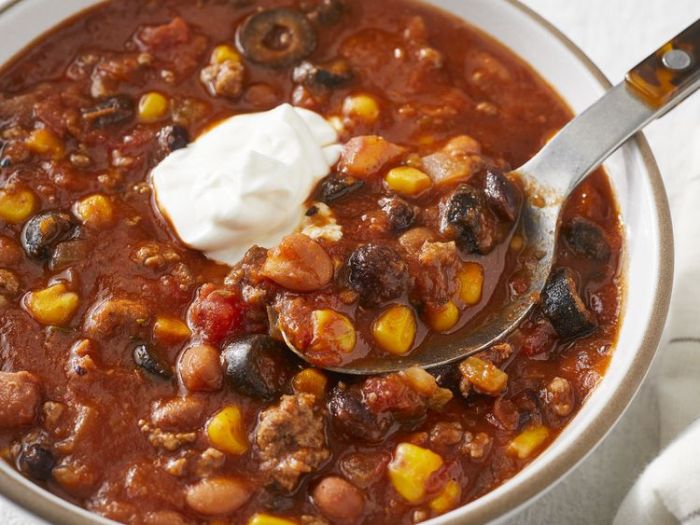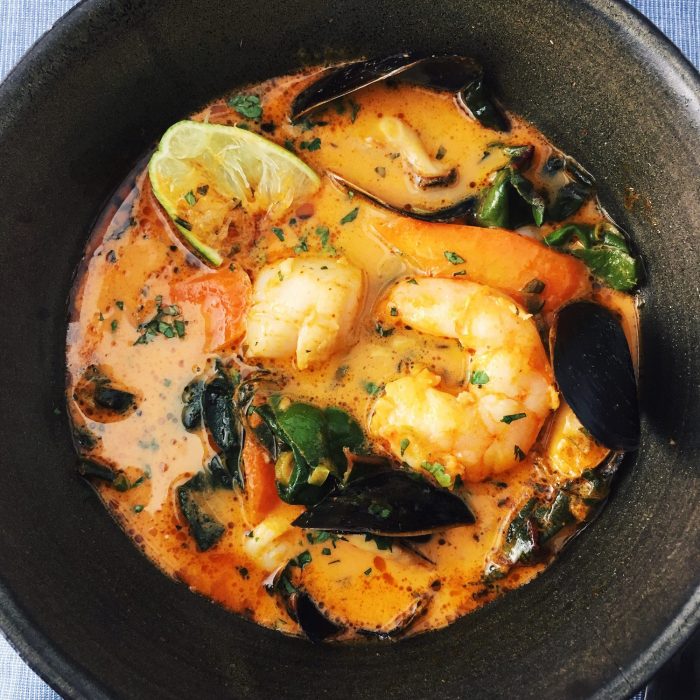Outback Steakhouse Baked Potato Soup Recipe Variations

Source: thecountrycook.net
This section explores three unique variations of the Outback Steakhouse Baked Potato Soup recipe, each emphasizing a distinct flavor profile through the addition of a key ingredient. We will analyze the nutritional impact of these variations and delve into the sensory experience each offers.
Recipe Variations: Bacon, Cheese, and Chive Enhancements, Outback steakhouse baked potato soup recipe
Three variations are presented below, highlighting bacon, cheese, and chives respectively. Each variation builds upon the base recipe, adding complexity and depth of flavor.
| Variation | Calories (per serving) | Fat (per serving) | Protein (per serving) |
|---|---|---|---|
| Bacon-Enhanced | Approximately 350 | 20g | 15g |
| Cheese-Loaded | Approximately 400 | 25g | 18g |
| Chive-Infused | Approximately 300 | 15g | 12g |
Bacon-Enhanced: The smoky, salty notes of bacon beautifully complement the creamy potato base. The crisp bacon bits provide a delightful textural contrast, adding a satisfying crunch. The aroma is rich and inviting, promising a hearty and flavorful experience.
Cheese-Loaded: A generous addition of cheddar cheese creates a luxuriously rich and creamy soup. The sharp, tangy flavor of the cheese cuts through the richness of the potatoes and broth, adding a bright counterpoint. The melted cheese creates a velvety smooth texture.
Chive-Infused: Fresh chives provide a bright, herbaceous note that elevates the soup’s overall flavor profile. Their delicate oniony flavor adds a subtle complexity, without overpowering the creamy potato base. The chives contribute a fresh, vibrant aroma and a pleasing visual appeal.
Ingredient Sourcing and Substitutions
Using high-quality ingredients is key to achieving the authentic Outback Steakhouse taste. This section discusses ingredient choices and offers viable alternatives.
Ingredient Quality and Alternatives
The success of this recipe hinges on the quality of its core ingredients. Below are some suggestions for sourcing high-quality ingredients and suitable substitutions.
Potatoes: Russet potatoes are ideal for their fluffy texture when cooked. Alternatives include Yukon Gold (creamier) or red potatoes (slightly firmer). Using a different potato variety will slightly alter the soup’s texture and flavor.
Broth: A rich, flavorful chicken broth is paramount. Alternatives include vegetable broth (for a vegetarian option), beef broth (for a deeper, earthier flavor), or homemade broth for superior taste and control over sodium content.
Cheese: Sharp cheddar cheese provides the ideal sharpness and creaminess. Alternatives include Monterey Jack (milder), Colby (slightly sweeter), or Gruyere (nuttier).
- Source high-quality ingredients from local farmers’ markets or specialty grocery stores.
- Look for organic and sustainably sourced ingredients whenever possible.
- Choose fresh herbs and spices for the best flavor.
- Use high-quality bacon, preferably thick-cut.
- Select a good quality chicken broth, preferably low in sodium.
Cooking Techniques and Methods
This section details the step-by-step preparation, exploring different cooking methods for the potatoes and achieving a creamy consistency without heavy cream.
Step-by-Step Preparation and Potato Cooking Methods

Source: copymethat.com
The following steps Artikel the preparation of the base recipe. Different potato cooking methods impact the final texture.
- Dice potatoes into 1-inch cubes.
- Boil potatoes until tender (approximately 15-20 minutes).
- Sauté onions and garlic in butter until softened.
- Add broth, potatoes, and seasonings to a pot; simmer until heated through.
- Blend until smooth using an immersion blender or carefully in a regular blender.
- Stir in milk or cream alternative for creaminess.
- Heat through and season to taste.
Potato Cooking Methods: Boiling yields a soft, fluffy potato, ideal for a smooth soup. Roasting adds a slightly caramelized flavor and firmer texture. Microwaving is the quickest method, but may result in uneven cooking.
Achieving Creaminess: A creamy consistency can be achieved without heavy cream by using milk (whole milk for richer texture), unsweetened almond milk, or even a blend of mashed potatoes for added thickness.
Serving Suggestions and Presentation: Outback Steakhouse Baked Potato Soup Recipe
This section provides creative serving suggestions, garnishes, and plating ideas for an enhanced presentation.
Serving Suggestions and Plating
The following table details serving suggestions and their descriptions. Visual presentation should focus on creating a warm and inviting aesthetic.
| Suggestion | Description |
|---|---|
| Classic Garnish | Sprinkle with chives, bacon bits, and a dollop of sour cream or plain Greek yogurt. |
| Cheesy Topping | Top with shredded cheddar cheese and a sprinkle of paprika. Broil until cheese is melted and bubbly. |
| Crispy Bacon Crumble | Serve with a generous side of crispy crumbled bacon. |
| Bread Bowl | Serve the soup in a warm, crusty bread bowl for a rustic presentation. |
| Roasted Vegetable Medley | Serve with a side of roasted vegetables, such as broccoli, carrots, and bell peppers. |
Visual Presentation: Serve the soup in a warm bowl, garnished generously. A rustic, homey aesthetic can be achieved using stoneware bowls. The creamy texture, contrasting colors of the garnishes, and the steam rising from the bowl create a visually appealing and appetizing presentation. Imagine a warm, ivory-colored soup with vibrant green chives, contrasting golden-brown bacon bits, and perhaps a swirl of creamy white sour cream.
Recipe Scaling and Storage
This section explains how to adjust the recipe for different serving sizes and provides guidance on proper storage and reheating.
Scaling, Storage, and Reheating
The recipe can be easily scaled up or down by adjusting the ingredient quantities proportionally. Double or triple the recipe for larger gatherings, or halve it for a smaller serving.
Storage: Store leftovers in an airtight container in the refrigerator for up to 3 days. Use a glass or food-grade plastic container to prevent absorption of flavors or odors.
Reheating: Reheat gently on the stovetop over low heat, stirring occasionally to prevent scorching. Avoid microwaving, as it may result in a grainy texture. Reheating in a saucepan maintains the soup’s creamy consistency and flavor.
Question Bank
Can I use different types of potatoes?
Yes, russet potatoes are traditional, but Yukon gold or red potatoes can also work, though the texture might vary slightly.
How long does the soup last in the refrigerator?
Stored properly in an airtight container, the soup should last for 3-4 days in the refrigerator.
Can I freeze this soup?
Yes, allow the soup to cool completely before freezing in airtight containers for up to 2 months. Reheat gently.
What can I use instead of heavy cream for a lighter version?
Milk, half-and-half, or even unsweetened almond milk can be used as substitutes, adjusting the quantity to achieve your desired consistency.


